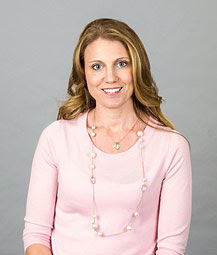Michigan launches 5-year pilot to stem targeted school violence

In March of 2018, the rural community of Paw Paw west of Kalamazoo was shaken by terrifying news of tragedy narrowly averted: a 15-year-old student had been arrested just hours before he planned to commit a mass shooting at the local high school the next day.
The teen was found to have a hit list and an arsenal of guns, explosives and ammunition in his dresser when his mother turned him into police after his grandfather discovered two missing weapons and evidence of sawed-off gun barrels in his barn.
Convicted of weapons and explosives charges, the boy served more than three years in juvenile detention until he was released on parole at age 19 in 2021.
One month after getting out, the same young man opened fire at a crowded South Haven beach. He randomly shot two people on the pier, killing 73-year-old Chuck Skuza and critically injuring Chuck’s wife of nearly 50 years, Barbara, before turning the gun on himself.
Two experts on mass shootings who co-authored a case study of the averted Paw Paw High School attack and the terrible aftermath in South Haven say the murder-suicide serves as another devastating example of the need to identify adolescents at high-risk for targeted violence and deliver sustained, meaningful interventions.
For that to happen, a new “next step” is needed in the school threat assessment process, according to Dr. Alyse Ley, associate chair of Education and Research in the Michigan State University Department of Psychiatry, and Dr. Frank Straub, senior director of Violence Prevention Research and Programs at Safe and Sound Schools.

“The idea is to increase the community collaboration and supports around high-risk, high-need adolescents so we can change the trajectory of their lives and reduce the likelihood they will commit an act of violence,” Ley said in a joint interview.
Ley and Straub are leading an effort to build that next step now as co-directors of “Prevent 2 Protect: The Adolescent Targeted Violence Prevention Project” – a five-year $15 million Michigan Department of Education-funded pilot starting up this fall in two Michigan regions to potentially serve as a national model for preventing acts of mass violence in schools.
“Without holistic, cross-system management of these individuals, they get lost in the cracks; we see that over and over and over again,” Straub said. He added in the case of the South Haven shooter, “There was no contemplation of how do we manage this potentially dangerous person in a community context.”
The same problem occurred leading up to the 2018 school shooting in Parkland, Florida, in which a 19-year-old former student killed 17 people and injured 17 others, Straub said. He and Ley were among a team of experts who produced a report on lessons learned and recommendations after the tragedy.
“With the shooter in (Parkland’s) Marjory Stoneman Douglas High School, mental health had a piece of the puzzle, law enforcement had a piece of the puzzle, the school had a piece of the puzzle, but nobody brought all of the pieces together.”
Straub has an extensive background in federal, state and local law enforcement, criminology and psychology with experience developing the Averted School Violence database and reporting on averted and completed school attacks.
Ley, a Michigan State University child and adolescent psychiatrist with clinical expertise in trauma-related disorders, has partnered with Straub and Safe and Sound Schools – a non-profit founded by Michele Gay, who lost her first-grade daughter in the shooting at Sandy Hook Elementary in 2012.
Backed by an advisory board of notable national experts, with the Harvard T.H. Chan School of Public Health acting as third-party evaluator, the pilot is launching in two regions this fall – Calhoun and Mason counties. Three more regions will be phased in next year.
The project will feature a state-level Hub of experts, including psychiatrists, psychologists, criminologists, physicians, educators and law enforcement experts with backgrounds in research, training, and providing clinical services and technical assistance.
The Hub will conduct psychiatric, behavioral threat, and needs assessments of children or adolescents who get referred and enrolled in the program. From that information, a comprehensive and individualized care plan will be developed.
Each region will also receive an intensive support team that includes a case manager, responsible for monitoring local implementation of the plan, and a mentor who acts as an adult role model and stays in regular touch to help the young person navigate challenges and identify activities of interest to further build connection.
“All treatment and services will be implemented in the community and not by the Hub or the regional support team, although the community professionals working with the adolescents will have access to expert consultation,” Ley said. “It doesn’t make sense for kids to leave to get treatment when the goal is to better integrate them and their families into the community.”
Care plans could include psychiatric or medical treatment, vocational training, social skills and connections interventions, therapies such as speech or language services, family supports – whatever is needed to address the struggles a young person is facing.
There is no “profile” of a school shooter nor one-size-fits-all solution, Straub said.
Researchers have learned from compiling data on averted and completed school shootings that the majority of attackers are adolescents and most schools involved are public high schools in rural and suburban communities.
An exception exists for every rule, so it’s important not to focus on a subset of individuals but to zero in on behavior, Straub said: “What are the behaviors that are manifesting and what are the causes of that behavior? What are the triggers – the antecedent events – that stimulate that behavior?
“Then how can we stop it? Behavior is a manifestation of underlying mental health challenges or life challenges – and we can try to address those.”
Outlines of the project have been discussed and evolved over years by Ley and Straub, along with Ley’s professional mentor, Dr. Frank Ochberg – a giant in the field of trauma-related stress who is on the advisory board. Ley is grateful to Gov. Gretchen Whitmer for securing funding for the pilot.
Above all, Ley said, the project’s partners believe young people in distress can be helped to create a sense of connection and confidence within their communities which shifts them away from a path toward violence.
The hope with Prevent 2 Protect is to create a model for averting school violence that can be replicated across Michigan and the U.S., she added. “What an extraordinary opportunity to work with experts from across the country who all have a common goal – and that’s to protect our children.”
Learn more at prevent2protect.msu.edu.
RELATED STORIES
IN FOCUS: SCHOOL HEALTH & SAFETY



